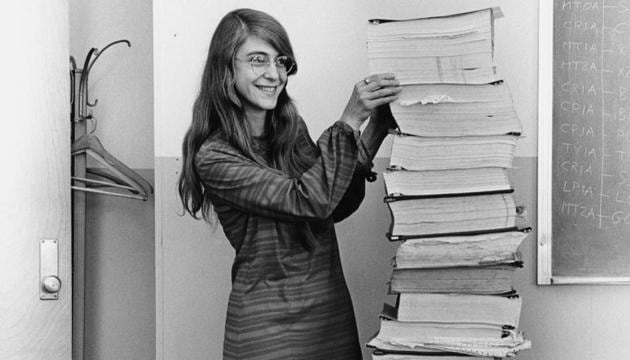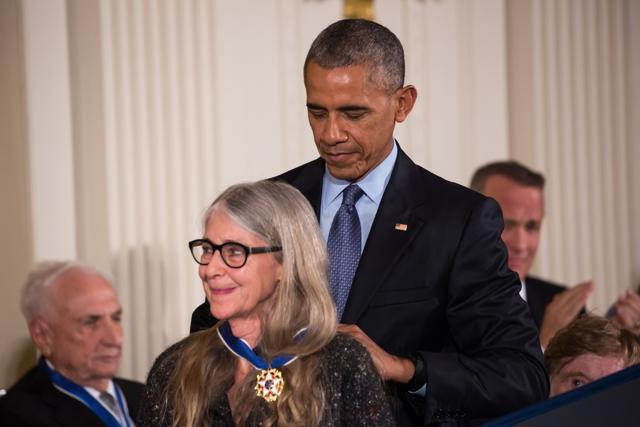The woman who put man on the moon
Margaret Hamilton, a 28 year-old American programmer, led the team that developed the first software to run on the moon
Astronauts are trained to be perfect. They do not make mistakes. Bunkum! Everyone makes mistakes. But because she agreed, in principle, to what her boss was saying, Margaret Hamilton, a programmer in the MIT lab working with NASA on the moon mission, thought no more about creating a code that could kick in, just in case the astronaut did err.

Hamilton had started thinking along these lines -- what if an astronaut pressed a wrong button in space -- when her daughter had pressed a wrong key in the Apollo Guidance Computer keyboard as she ran around her mother’s office on a working weekend. But the 28-year-old Hamilton was still five years from making history -- it was her software programme that helped to get man on the moon – so she was brushed aside.
Hamilton, now 83, is a software evangelist recognised in her field for leading the team that developed the software for the guidance and control systems of the in-flight command and lunar modules of the Apollo missions.
Problems galore
Speaking at a recently held seminar in the US, she recalled the momentous few minutes just before Neil Armstrong and Edwin Aldrin landed on the moon on July 20, 1969: “Problems began when the computer was overloaded with commands from the rendezvous radar and the landing system, requiring more processing power than the computer could handle. The software not only informed NASA’s mission control room and the astronauts of the overloading problem, the software also started compensating for it, it gave the astronauts the go / no-go option; they decided to land. The Apollo 11’s crew became the first humans to walk on the moon and our software became the first software to run on the moon,” she said.
To say that the rest is history is telling half the story. The way to this milestone was paved with the errors she helped anticipate and fix and they were key to the success of the space mission. They also brought the astronauts home safe.

Just prior to Apollo 11 was Apollo 8 (the first manned mission to orbit moon in 1968) and an astronaut, just like Hamilton’s daughter, pushed the wrong button. It took nine hours for her to fix that; had she been allowed to factor this in earlier, the turnaround time would have been shorter. After that, she was allowed to add the code to account for human error.
On July 20, 1969, three minutes away from moon landing, the same error recurred; a switch was moved in the wrong position, but this time Hamilton’s software was ready.
Why the moon mission was a big deal
Hamilton was born in the US mid-West in 1936, just three years before World War II began. Her growing-up years told her what it meant to have control of the sea and the sky. By the time she was in her twenties, the moon-landing project had become a big deal in ’60s America because of it had seen science and technology do during the war: the German V2 rockets had wiped out thousands in London and Antwerp as had the atomic bombs in Japan.
Should war visit the US, it felt its space knowledge would make it level with its Cold War rival, the then Soviet Union, which had already put the first man (Yuri Gagrin in 1961), first woman (Valentina Tereshkova in 1963), and even the first dog (Laika in 1957) in space.
Hamilton was honoured with NASA’s Exceptional Space Act Award (2003); Barack Obama gave her the Presidential Medal of Freedom (2016). But what Hamilton seems to consider her legacy is that she is the ‘mother’ of software engineering, which also means she was among the first to fix what is today any office-goer’s nightmare – a ‘computer crash’. Hamilton joined the field when there were no schools teaching software engineering. “There was no choice but to be pioneers. Looking back, we were the luckiest people in the world,” she has said in many of her interviews, while talking of the moon mission.
Everyone has heard of Armstrong and Aldrin; outside the US, she is unknown. But she has travelled a long way from her time in the MIT lab on the Apollo project, where, initially, the standard response to trying something new was, according to Hamilton, “Let’s give this programme to Marge, she’s a beginner and we’re never going there [to the moon] anyway.”






